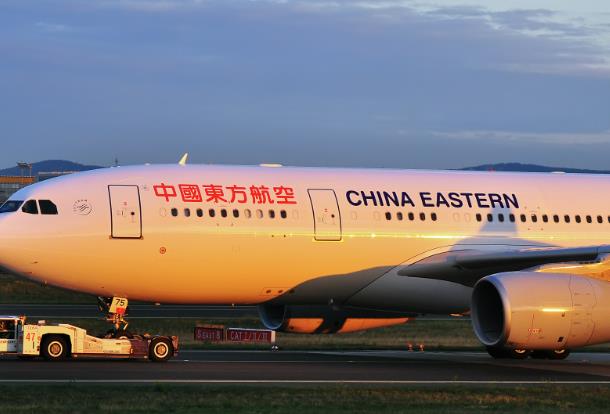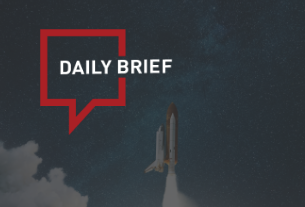Expedia has made a deal in recent years about its stated goal of moving from being a web company to a technology platform.
Part of this shift, beyond the obvious business jargon-ness of it, has been the development of tools and services for hotel chains.
Tnooz spoke to Cyril Ranque, Expedia Group president of lodging partner services, for an update on some of the initiatives as well as a view on the current relationship between online travel agencies and hotel brands.
On Marriott Vacations, Red Lion and Best Western
Expedia signed the deal to power Marriott Vacations about 20 months ago and Ranque says the company has seen “continuous double digit growth” on packages.
“More packages were booked in the first two weeks of January than any other two week period since Vacations by Marriott started.
“We’re looking to expand that product and there are more chains who want to sign up.”
Best Western Europe was the first to partner with Expedia on its MeetingMarket product back in November. There are 200 hotels about to go live and earlier this week NH Hotels was revealed as the second major chain to use Expedia to power its meetings and events booking.
Ranque says the partnership with Red Lion to promote the chain’s loyalty program, also continues to be a success.
“These three products are test products we’ve done with these chain partners and the idea is to see if there is a) an appetite from the industry and chains and b) success. We’re open and we share data and based on this success we scale the capabilities to offer that to more partners.”
On one-off initiatives versus the ability to expand and scale
Ranque says the company doesn’t necessarily think about whether an individual initiative is going to be accepted and scale but rather whether it can get multiple initiatives into the market and see what has the most potential.
“It’s more the velocity of the test and learn approach that is important. The more products you can put out there, the more partners you can find that want to test that with you, the higher the chance that some of them will stick.”
He talks of the two parallel strategic objectives, as stated by chief executive Dara Khosrowshahi:
The evolution from being a web company to being a platform company. In recent years, Expedia has made significant investment in its technology platform and now wants to ensure it gets a return from that.
Ranque explains:
“We have added Travelocity, Orbitz, Wotif and ebookers and the increased volume makes the technology investment more profitable. The next step is to extend that to our partners such as hotel companies and that’s why you see us using the same approach, (instead of an M&A approach), a technology provider approach.”
He adds that it started with the Marriott Vacations development and the “natural next step” is to do something similar for standalone travel product.
The second strategic objective is to apply a similar approach to partners as the company has with consumers.
“We’re now trying to understand what partners need, the pain points they are facing, and building products to address those pain points, or, business objectives.”
Rev+, the revenue management tool launched last September, was developed because of feedback from hoteliers on the manual process involved.
The technology has just been released in the UK.
The development of a guest sentiment analysis service followed a similar path with hotels telling Expedia they wanted to mine reviews to see how and where they could improve the service.
The development of a guest sentiment analysis service followed a similar path with hotels telling Expedia they wanted to mine reviews to see how and where they could improve the service.
Ranque says:
“The more we can build products that are solving partners’ needs, making their operations more efficient, the more it justifies the cost of working with Expedia, which is something we hear about all the time.”
He says that uptake of Rev+ has been good and it answers the needs of sophisticated partners well but, it needs to be simplified for partners with less complicated data needs.
“We need to think of a product that is more action orientated, of simpler use, than the current one which is fairly rich in data. The next natural evolution is to have some options for sophisticated hotels and a simpler interface for others.”
On where the gaps are in terms of hotel tech services?
Ranque sees gaps in a lot of places and says Expedia is “just getting started.”
The company offers a revenue management tool in Rev+, something to help hotels attract customers in marketing products such as TravelAds and the newer TravelAds direct service and, the potential to evolve its white label offerings, such as that with Marriott, to help properties improve conversion.
“These are good solutions but all of them in their infancy. We have a long way to go but it’s quite promising.”
He adds that the company is also just starting to address the “in-stay” experience with keyless entry trials taking place with a partner in Norway as well as Expedia Group’s investment in Alice.
On loyalty schemes and how they’re changing
Ranque believes the loyalty programs of the big chains should focus more on differentiation and less on rate and financial benefits.
“If the brand loyalty is only on discount, there are lots of other ways to get discounts so now they are thinking more abut balancing the investment that has been going into the rate area of the program towards more differentiating experiences.”
He says the loyalty initiatives focused on rates have reduced recently in favour of campaigns aiming to build loyalty through a “differentiated product.”
On the perception of direct campaigns from the big chains versus the reality
Ranque explains this as a simple concept and says a balance needs to be achieved for the good of consumers as well as one that benefits owners, investors, OTAs and the hotel operators.
“In order for industry to be sustainably successful, we need owners and investors to have good return on their capital and have a predictable financial growth profile that doesn’t diminish or reduce every year because of increased cost.”
He says that hotel operators needed to be seen to be listening to their owners and investors and addressing these increasing costs – hence, why the brands launched loyalty rate campaigns.
It cannot be the OTA wins, the brand wins and the owner loses, because then we’re depleteing the investment hat goes into the industry. And, it has to be without making the consumer experience more cumbersome.”
Ranque sees the current situation as a “transition period” when the various stakeholders seek to find common ground.
And finally – on distribution decisions for anyone opening a new hotel
In this scenario, Ranque believes OTA distribution is the most efficient way to generate customers by a “million miles.”
“OTA distribution is the way to go to be efficient. That does not mean a hotel should not work on having a great brand.com experience. It’s complementary.”
Read original article




